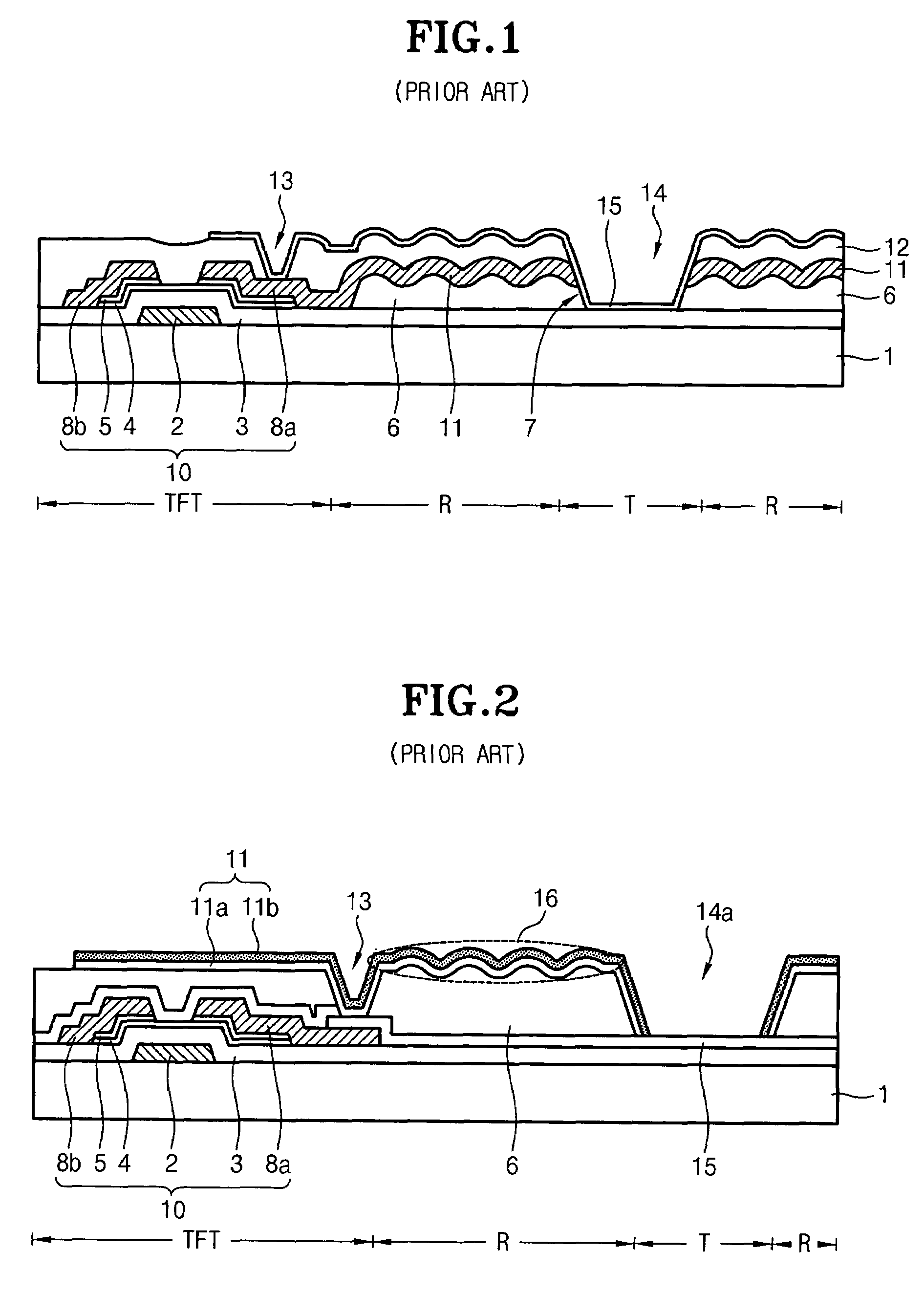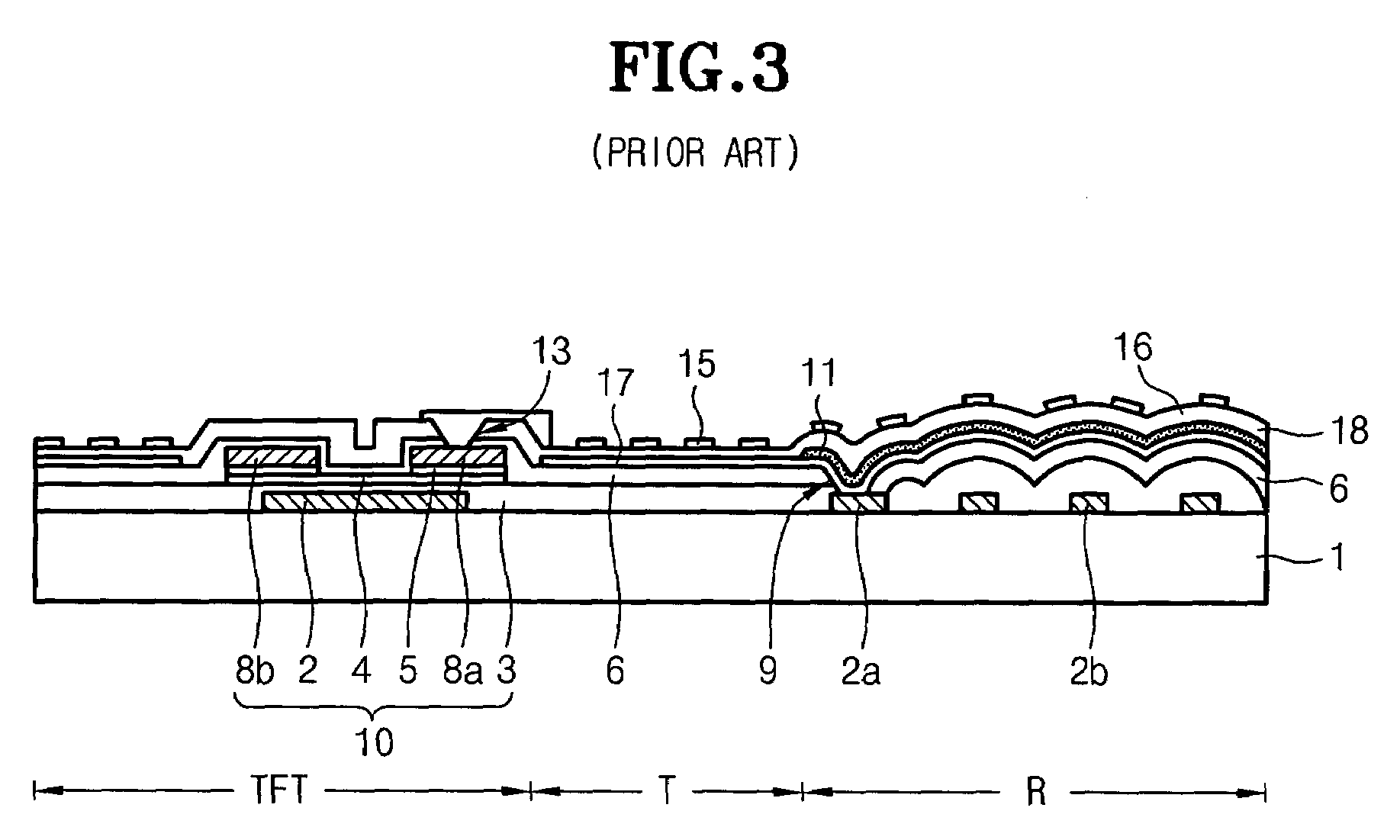Method for manufacturing array substrate of translucent LCD
a technology of translucent lcd and array substrate, which is applied in the direction of optics, instruments, electrical equipment, etc., can solve the problems of high power consumption of backlight, inability to use reflective lcds, and easy light emission, so as to improve both the reflectivity properties in the reflective region, and improve the contact resistance in the transmissive region. , the effect of improving the reflectivity
- Summary
- Abstract
- Description
- Claims
- Application Information
AI Technical Summary
Benefits of technology
Problems solved by technology
Method used
Image
Examples
Embodiment Construction
[0046]Hereinafter, a preferred embodiment of the present invention will be described with reference to the accompanying drawings. In the following description and drawings, the same reference numerals are used to designate the same or similar components, and so repetition of the description on the same or similar components will be omitted.
[0047]The present invention uses a triple layer of Mo—Al—Mo to form source and drain electrodes, as well as a reflective electrode. In a reflective region, the top Mo is removed to expose the Al metal layer, which has a high reflectivity and, in a TFT region, the top Mo remains intact. This secures an excellent level of reflectivity in the reflective region and good electrical contact in the TFT region. As a result, the screen quality of products improves, and the production cost can be reduced by using inexpensive Mo and Al.
[0048]In addition, the present invention utilizes half-tone exposure technology to manufacture an array substrate of a trans...
PUM
| Property | Measurement | Unit |
|---|---|---|
| translucent | aaaaa | aaaaa |
| thickness | aaaaa | aaaaa |
| photosensitive | aaaaa | aaaaa |
Abstract
Description
Claims
Application Information
 Login to View More
Login to View More - R&D
- Intellectual Property
- Life Sciences
- Materials
- Tech Scout
- Unparalleled Data Quality
- Higher Quality Content
- 60% Fewer Hallucinations
Browse by: Latest US Patents, China's latest patents, Technical Efficacy Thesaurus, Application Domain, Technology Topic, Popular Technical Reports.
© 2025 PatSnap. All rights reserved.Legal|Privacy policy|Modern Slavery Act Transparency Statement|Sitemap|About US| Contact US: help@patsnap.com



